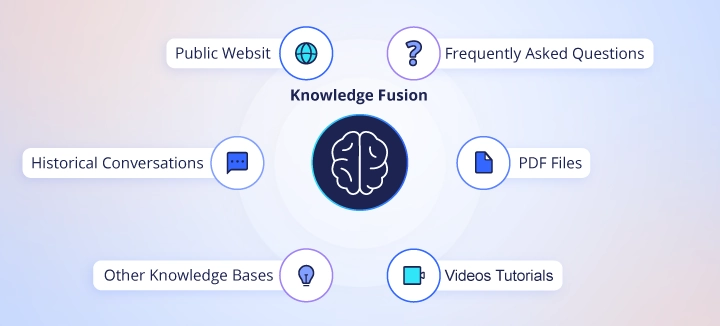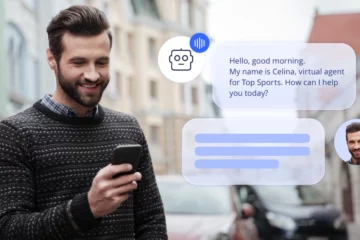Did you know that, 2by 2025, 75% of the tasks that take place in the contact center will be carried out by AI? And by 2030, 80% of people will have daily contact with virtual assistants*. This increasingly accelerated growth corresponds directly to the arrival of generative AI and prompt engineering.
But what exactly is generative AI? It goes beyond being a simple tool or a technological complement. We are facing a real revolution in the field of artificial intelligence. While Deep Learning has marked a before and after in data processing, generative AI takes things a step further. Technology can generate content based on specific commands, optimizing and accelerating processes that were previously unthinkable.
At inConcert we not only look to the future, we are building it: thanks to the implementation of the most advanced generative AI model, ChatGPT, our chatbots are redefining the rules of the game in customer interaction.. It is no longer solely about responding to inquires; it is about anticipating requirements and tailoring each interaction to the utmost degree.
Bot Training
In a context of increasingly accelerated changes and transformations, minimizing the time spent on bot training is essential for the success of a company. Previously, the task, carried out by a team of specialized linguists, required between 4 and 6 weeks. By combining GPT and Embeddings, at inConcert we can reduce this process to minutes and improve our correct response rate, achieving a CX capable of evolving in real time.
Traditionally, the process begins by writing a list of frequently asked questions (FAQ). The bot is then trained based on these, where a team of linguists writes between 10-15 examples for each question. In a third instance, the bot is tested to adjust any type of details, prior to its putting into production.
So far, the efficiency of the bot depended to a large extent on the provided FAQs. However, companies rarely can translate all their business knowledge into a question-and-answer format. Now, through generative AI, it is possible to unify all existing structured and unstructured information into a single knowledge base to activate it in a matter of minutes.

Simplified Knowledge Management
Linguistic AI models developed by OpenAI and other companies researching generative AI enable us to dispense with traditional FAQs and implement much more dynamic and immediate strategies. The language analysis capability of these engines streamlines the training phase of a bot, as they can “understand” the content we provide from multiple inputs, such as PDF documents, video tutorials, public websites, historical conversations and other knowledge bases. Generative AI not only has the power to analyze large and varied sources of information instantly, but also detect patterns and relationships to generate new content and much more efficient interactions.
This way, fundamental goals are achieved: reduced development time and costs in the initial setup. In addition, achieving a higher percentage of detected responses improves customer satisfaction and significantly reduces queries to advisors, offering personalized interactions at the right time and human support in key situations.
At the same time, it eliminates the need to develop quick response templates for advisors or knowledge portals that host all the information that may be necessary to resolve a particular situation. It also avoids lengthy training and updating processes by using embeddings and a simple graphical user interface (GUI) to make changes immediately and with minimal effort.
Intent Detection
The combination of GPT and NLU enhances the detection of users’ and customers’ intentions in each of their interactions. This technological advance not only improves training times of cognitive models, but also allows to provide a hybrid approach: it generates and interprets with GPT and uses NLU when it is required to execute a rigid procedure, considering all the historical context of the conversation.
Conversational Bots with training and active learning capabilities achieve greater understanding and more natural conversations with each interaction. On the other hand, incorporating STT (speech-to-text) and TTS (text-to-speech) voice technologies allows them to understand the colloquial speech of clients and answer in the same way. Using GPT as a response generator enables a multilanguage experience of excellence where we can answer in the user’s language, regardless of the language defined as predefined.

Quality Leads
We know that generating quality leads can be one of the most difficult (and expensive) tasks of your strategy. In this context, chatbots not only enhance the acquisition stage through greater engagement but, by increasing the lead rate, simultaneously improve conversion and reduce costs, directly impacting the CAC.
In addition, as we have seen previously, the bot can carry out conversations in real time asking specific questions for a correct classification of the lead and, based on the answers received, it can continue with a specific subset of tailored questions to detail the classification in a more granular way.
Sales Support
Generative AI also improves agent efficiency, making sure it follows a given script and assisting it in real time with strategic feedback based on the ongoing conversation. For example, if the customer mentions a competitor, the system provides information about their own competitive advantages in order to strengthen their sales arguments.
This also allows you to overcome recurring problems, such as keeping agents informed and updated on dynamic changes in the services offered. Furthermore, it facilitates the onboarding and training of new agents, providing quality support to enhance their efficiency.
At inConcert we are at the forefront of innovation.We offer up-to-date technological solutions with the latest interaction models to optimize the entire customer life cycle and multiply sales in an intelligent, efficient and scalable way.
Do not miss our next article to learn how we can transform your business with generative AI, with 7 uses to optimize daily processes intelligently.
*Source: Emerging Tech Impact Radar: Hyperautomation, Gartner (2023)
How composite AI is improving processes
in the banking sector Check out the report
How composite AI is improving processes in the banking sector
Check out the report



